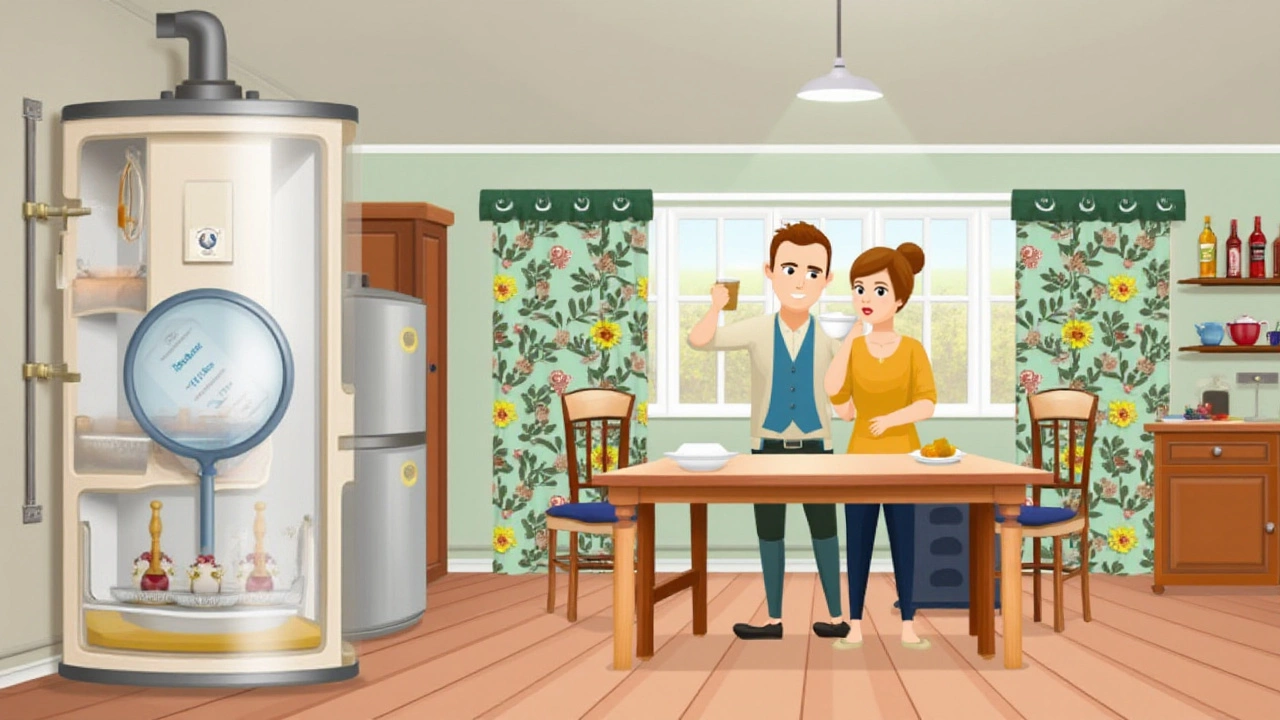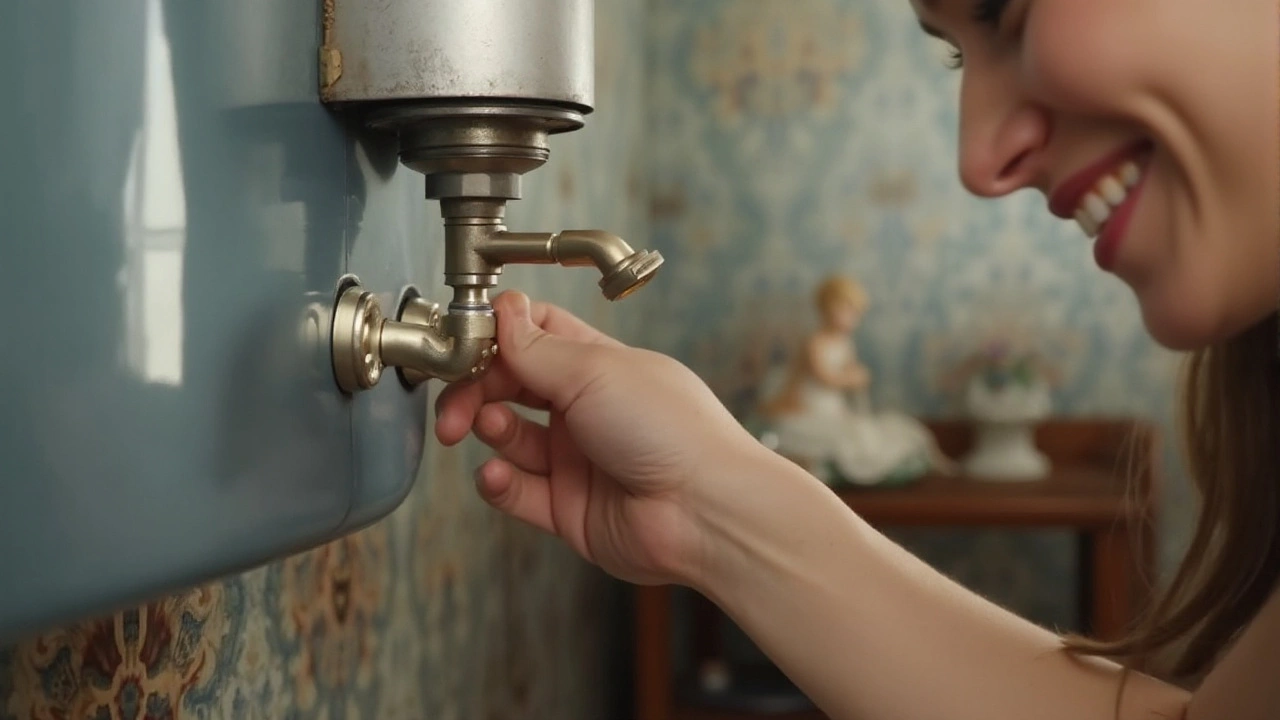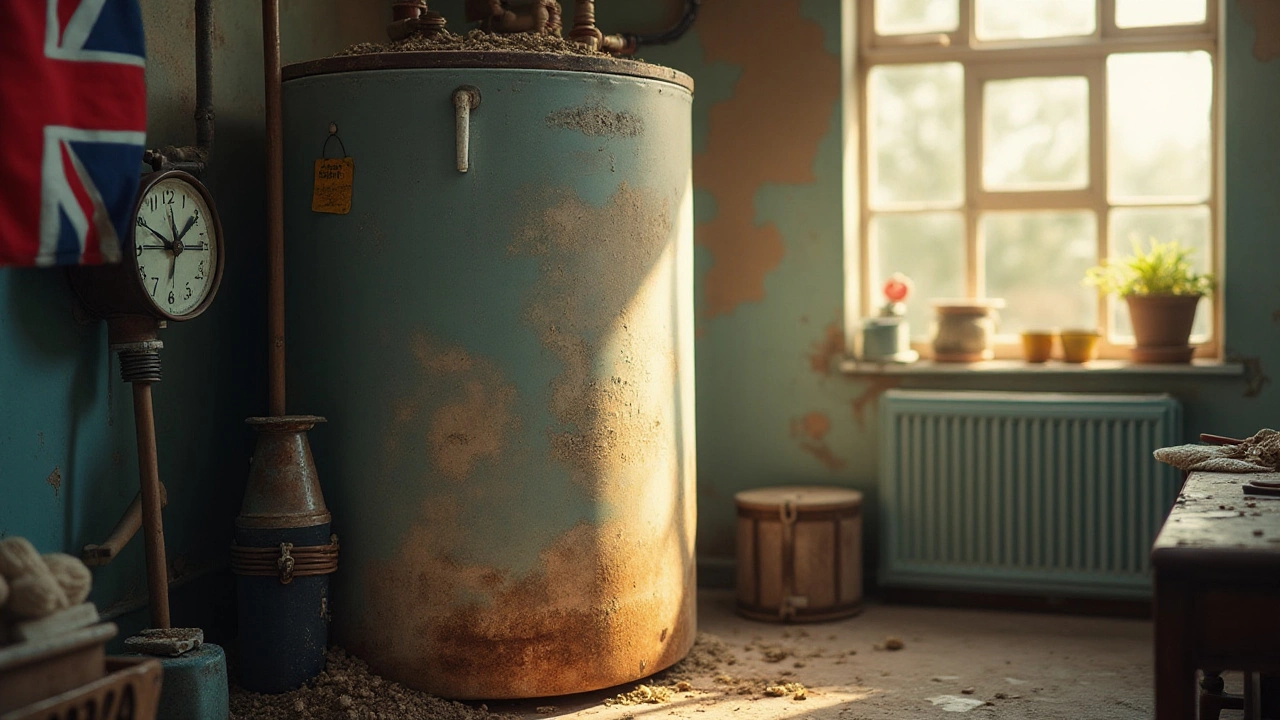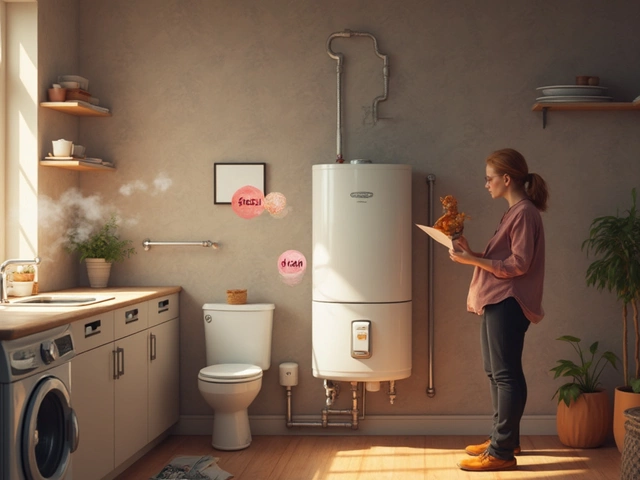Water heaters often play the unsung hero in our homes, quietly providing hot water at the twist of a tap. But, like any reliable appliance, they do require a bit of upkeep to continue running smoothly. One key maintenance task is the regular flushing of the system.
Skipping this step might seem inconsequential, but it can lead to some surprising challenges. From sediment buildup to reduced efficiency, failing to flush your water heater can lead to much more than a slight inconvenience. Let’s dive into what happens when this essential step is overlooked and how you can keep your heater in top condition.
- Why Regular Flushing is Important
- Risks of Ignoring Maintenance
- Signs Your Water Heater Needs Attention
- Steps to Properly Flush Your Heater
- Tips for Prolonging Water Heater Lifespan
Why Regular Flushing is Important
Regular flushing of your water heater is critical for several reasons that span from performance to longevity of the device itself. Most notably, it prevents sediment buildup—a common issue in many household water systems. Sediment forms from minerals like calcium and magnesium that accumulate at the bottom of your heater's tank over time. Imagine trying to boil a pot of water with gravel at the bottom; the heat distribution would be inconsistent, leading to inefficiency. Similarly, sediment acts as an unwanted insulating layer between the water in the tank and the heating elements. This insulation forces your heater to work harder, using more energy and increasing your utility bills. Not only does this waste energy, but it can also reduce the heater's capacity to provide hot water, causing strategic showers and lukewarm baths.
The presence of sediment doesn’t just result in increased energy bills. It can produce unsettling noises from your water heater too. You might hear popping, rumbling, or even banging sounds as the heated water tries to move past the sediment layers. While these noises can initially seem harmless, they often serve as a precursor to more severe issues such as overheating or poisoning the heating element's lifespan. Frequent occurrence of these noises should not be ignored as they suggest the sediment level might have crossed the tolerance threshold, necessitating immediate attention to avoid more significant damage.
"Sediment buildup can reduce a water heater's efficiency by as much as 50 percent if left untreated," states the Energy Department's Office of Energy Efficiency and Renewable Energy.
Health and safety risks emerge when sediment is ignored for too long. The trapped water under the sediment layers can eventually cause the tank to overheat, leading it to deteriorate faster. In some instances, excessive sediment can even lead to prolonged contact with rapidly changing temperatures, causing the tank to crack. Regular maintenance, including flushing the water heater, can prevent these severe issues and extend the heater’s life by several years.
Regular flushing offers a cost-effective solution to maintaining the water heater. Basic maintenance is simpler to perform and much less expensive than repairing or replacing a water heater suffering from neglect. Consider a quick comparison: replacing a traditional tank water heater costs thousands of dollars, while regular flushing services cost a fraction of that investment. With this simple maintenance step, homeowners effectively grant their heater a longer lease on life while maintaining energy efficiency.
Risks of Ignoring Maintenance
Maintenance might feel like a chore, but with devices like your water heater, it's as necessary as breathing is to a marathon runner. Ignoring regular upkeep can spell trouble in more ways than you might expect. It's not just about keeping the water hot; it's about ensuring the system doesn't quietly turn into a ticking time bomb. One of the primary problems of neglecting to flush your water heater is sediment accumulation. Minerals like calcium and lime, lurking in seemingly innocent tap water, settle at the bottom of the tank over time. This buildup forms a gritty layer that not only reduces the capacity of your tank but also acts as an unwanted blanket, absorbing heat and reducing the heating efficiency. Imagine trying to bake bread in an oven with no heat control; that's what your water heater starts feeling like.
There's also the insidious creep of corrosion. When you leave sediment unchecked, it creates a corrosive environment right at the heart of your heater. Corrosion can eat through the tank material, leading to leaks and, in worst cases, complete tank failure. Now imagine waking up to a flooded basement or utility space because a water heater decided to finally give up after years of neglect. Apart from the chaos that such a leak could cause, think of the potential costs. Repairing or replacing a water-damaged space is expensive, and that’s before you even think about a new heater.
In addition to these, water heaters can become breeding grounds for bacteria if left unattended. Legionella, the bacteria which causes Legionnaires' disease, thrives in tepid water environments. Your heater, if not maintained, could inadvertently support these unwanted guests. According to a report, it's estimated that Legionnaires' disease affects thousands of people each year — a consequence most would likely prefer to avoid. A few minutes spent on maintenance each month can save not just money, but also your health.
"A water heater is not just another appliance. It's a boiler in your basement. Like any boiler, it requires regular maintenance to ensure safety and performance," said John Banta, a research scientist at Consumer Reports.Beyond these internal issues, neglected heaters can lead to sky-high energy bills. The sediment-laden heater forces the system to work overtime to heat the water, increasing energy consumption and, consequently, costs. You might find your wallet thinning out pretty quickly just because of the energy inefficiency caused by lack of maintenance. Yet, a simple flush could have prevented it all.

Signs Your Water Heater Needs Attention
Just like any other appliance that quietly does its job in the background, a water heater often doesn't call for attention until something seems awry. It's essential to recognize those subtle signs that something might be amiss before a small problem turns into a major headache. One of the first indicators might be the temperature of the water. If it's not as hot as it used to be, this could suggest that the heating element is struggling due to sediment build-up or wear and tear. Sometimes, the water never quite reaches the temperature you expect, or maybe it takes a longer time to heat up. This performance dip often hints that a closer inspection is warranted.
Listening closely, you might hear strange sounds from your water heater. These noises could range from rumbling to popping, indicative of a buildup of minerals at the bottom of the tank which, when stirred by the heating process, can cause such audible disruptions. This sediment accumulation doesn't only make sounds; it also affects the efficiency of your heater, making it work harder and longer, thus potentially reducing its lifespan. This can also lead to an increase in your utility bills as the water heater requires more energy to work against the insulation created by sediment layers.
Another sign that should not be ignored is the presence of discolored or rusty water. If the water coming out of your taps looks rusty, it might indicate corrosion either within the pipes or the water heater itself. While this can sometimes be attributed to old pipes, it is often a sign of a deteriorating tank interior. This rust not only ruins the look of your water but can also pose health risks and affect the taste and safety of your water supply.
Experts often stress the importance of paying attention to leaks around the heater—these are not inconsequential drips. Even a small puddle can signal serious problems like a crack in the tank, which might necessitate replacing the entire unit. As a precautionary measure, inspecting your water heater for signs of leaking or dampness around the base should become a regular habit, especially if it's situated within living spaces or near valuables.
According to the U.S. Department of Energy, "Water heating can account for around 18% of a home's energy use." Ensuring your water heater is in peak condition not only prolongs its life but also optimizes energy efficiency, saving you money in the long run.
Lastly, take heed if your heater is nearing or has surpassed the 10-15 year mark. Even the sturdiest of water heater brands face a decline in performance over time. Regularly scheduled maintenance and monitoring can preemptively catch those age-related issues before they mandate urgent and inconvenient replacements. By staying vigilant and addressing these signs early, you're not only extending the heater's life but also ensuring consistent access to warm, reliable water.
Steps to Properly Flush Your Heater
Getting into the routine of flushing your water heater can seem like a daunting task, but breaking it down into simple steps makes it manageable. Before you dive into your toolkit, the key is preparation. Ensuring your safety is a priority and you begin by turning off the power supply to the heater. If it’s electric, you switch off the circuit breaker. For gas heaters, turn the thermostat to the pilot setting. Next, turn off the cold water supply to prevent new water from entering while you flush.
After ensuring the heater is safely disconnected from power, it’s time to attach a hose to the drain valve at the bottom of the tank. The other end of the hose should lead to a floor drain or directly outside. Open the valve carefully and allow the water to drain completely. You might be surprised at the murky, sediment-laden water that emerges, evidence of why maintenance is crucial. Once the tank has emptied, you may want to turn the cold water supply back on for a moment. This action stirs up and disposes of any residual sediment sticking to the bottom of the tank. A clear tank should be what you aim for.
"An annual flushing of your water heater can lead to a fifteen-percent improvement in energy efficiency," says Mark K., a reputable home appliance expert. Regular maintenance not only extends the life of the heater but also yields savings on energy bills each month.
With the tank clear, it’s time to remove the hose, then close the drain valve securely. Only once you’ve checked everything is in place do you proceed to turn on the cold water supply. This refills the tank, which can be verified by turning on a nearby hot water tap until water begins to flow steadily from it. Finally, reignite your water heater by turning the gas or electric power supply back on. Observe and ensure it's functioning properly and watch for any signs of leakage around the valve that you used for draining.
Performing regular flush tasks increases efficiency, reduces noise, and keeps the water heater in optimal working order. Once you get the hang of it, the process becomes a quick and easy addition to your routine home maintenance schedule. Remember, a well-maintained heater serves you better and helps avoid unexpected and costly replacements. Consider marking a date on your calendar so as to not forget the next time you should take this simple yet impactful step, ensuring the longevity of your investment.

Tips for Prolonging Water Heater Lifespan
To maximize the lifespan of your water heater, regular attention to maintenance can make all the difference. One of the most effective strategies is learning the correct way to flush your water heater. By removing accumulated sediment, you prevent unnecessary strain and maintain efficiency. Think of it like getting an oil change for your car—it keeps everything running smoothly. Ideally, a flush should be done annually, but if you're in an area with hard water, more frequent flushing may be necessary.
Another crucial tip is to regularly inspect the anode rod, the silent guardian that defends your heater's tank from corrosion. This rod, typically made of aluminum or magnesium, attracts corrosive elements before they can damage the tank. Replace this rod every four to five years or sooner if significant wear is present. A proactive check every six months can save you from costly repairs down the line. Don’t wait until the tank gives out when a simple rod swap can extend its life substantially.
Temperature management is also key to a longer-lasting water heater. Keep the thermostat set to no higher than 120 degrees Fahrenheit. This prevents excessive pressure and prolongs the unit's efficiency. Plus, it can even lower your energy bills—a solid win-win scenario. Just imagine a water heater that not only lasts longer but also saves you money every month. That level of optimization can have a noticeable impact on household expenses over time.
"The most common mistake homeowners make is ignoring basic water heater maintenance," says Dr. Howard Frantz, a leading expert in plumbing technology. "Simple tasks, like checking fittings and valves for leaks, can prevent minor issues from becoming major headaches."
Insulating both the tank and the pipes is another powerful strategy. It minimizes heat loss, especially if your water heater is in an unheated space like a garage or basement. Insulation helps maintain the temperature of the water, reducing the workload on the heater. This not only keeps your showers delightfully warm but also takes the stress off the appliance itself, allowing it to operate more effectively.
Here’s an additional tip: gently test the pressure relief valve at least once a year. It ensures the unit isn't subject to excessive pressure. Carefully pull the valve and make sure it releases a burst of hot water into the drainpipe. This simple check helps prevent tank rupture and is easy to do, even for those who aren't particularly handy. Trust the process to avoid potential disasters down the road.
In conclusion, these maintenance tips not only help prolong the life of your water heater but also improve its efficiency and safety. Adopting a few straightforward practices can result in years of reliable service without unexpected interruptions. So, next time you're tempted to ignore your water heater, remember these tips and treat it with the care it deserves. You'll thank yourself later when you're enjoying consistent, hot showers even on the coldest winter mornings.




